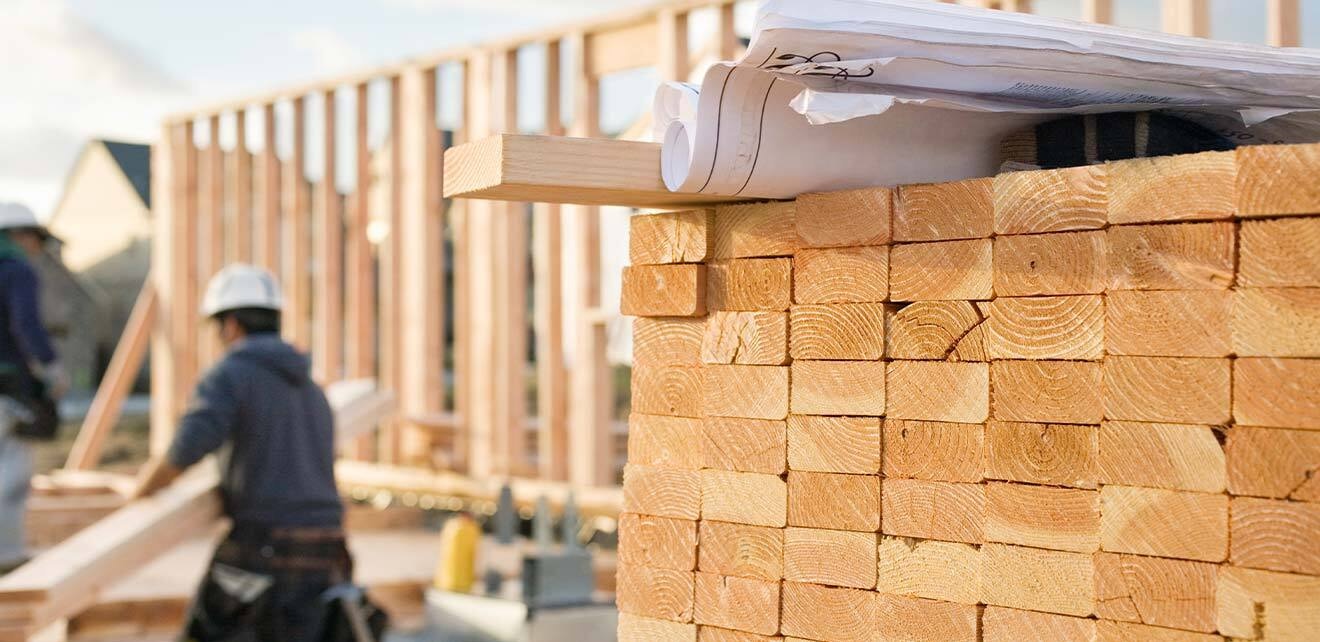Home > Blog
Read Time — 4 minutes
4 Steps Home Builders Can Take to Control Lumber Costs

Round two of escalating lumber prices could be headed our way. This year, home builders need to take a more proactive approach. Below are four steps you can take to control your lumber costs.
Step 1: Verify your lumber drop
The first and easiest step is to verify your lumber drop against the purchase order to confirm you have received what you paid for. If you have never been to your lumber yard at six in the morning, you should go. It is an amazing example of organized chaos. You will quickly understand how it could happen that your lumber package is not complete. Once the lumber is on your site, you have accepted it as is. Upon delivery, you should be checking your delivery against your purchase order to confirm you have everything. Missing 40 sheets of OSB can easily happen, and at today’s price, could be worth more than $1000. When you are forced to go to your local supply yard to replace the missing sheets, your cost for 40 sheets of OSB just increased to $2,000.
Step 2: Monitor waste
Schedule your lumber deliveries wisely and monitor waste. Lumber packages can be broken into multiple purchase orders and dropped on separate days. Why drop the first and second floor on the same day, exposing the materials to weather, and more importantly, theft, if you can have them delivered when needed? How many sheets of OSB end up being used as walking surfaces? Concrete forms can be used multiple times. Blocking should be cut from scraps, not full-length pieces of wood. What other ways do you see lumber being wasted on your site? Take the time to review what is in the dumpster—it will tell you a lot about how the materials are being used.
Step 3: Value engineer your products
Value engineer the product and ensure the accuracy of your estimates and purchase orders. To have accurate purchase orders, you need to understand how you use the materials to frame the house, and you need an accurate estimate for those purchase orders. With your plans in hand, walk the house with your team and value engineer the product. Look at how you build your corners and the use of LVLs and headers, etc. Be sure everyone is in agreement as to how the house is framed, and transfer this information to the estimate to tighten up the lumber order.
Step 4: Use multiple lumber suppliers
Finally, it is important to have more than one lumber supplier, especially in today’s challenging supply chain environment. There are a variety of strategies for managing more than one vendor. Developing and maintaining your own lumber list is a good place to start. The 80/20 rule can be an effective strategy. A strategy that does not work is using one lumber yard for all of your materials and an alternate vendor only when your primary one does not have what you need. Leveling the playing field and maintaining equally strong relationships will mean you have two teams that are ready and willing to help you out when you are in a supply or availability pinch.
These four steps can save you more than $5000 per house (at today’s prices). If you are building this product multiple times per year, the savings increase at an exponential rate. How much could you save executing these steps for all of your products? The only thing that stands in the way of this type of savings is a decision. You can sit by and watch your margins erode again this year, or you can take these steps and have some control. It’s your call. A proactive approach to controlling your lumber costs will help your bottom line, regardless of the price of lumber.
As a member of the Shinn Consulting Team, Carrie Roeger brings a wealth of homebuilder knowledge to the table. With 16 years of production homebuilder leadership experience in an organization that earned higher than average net profits, Carrie can help implement proven tactics that will help your organization thrive.
Contact Carrie Roeger at Shinn Consulting for more information: Carrie@shinnconsulting.com



